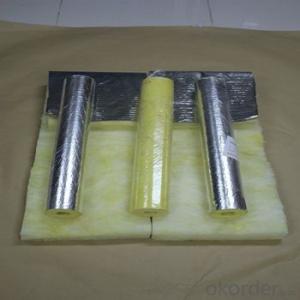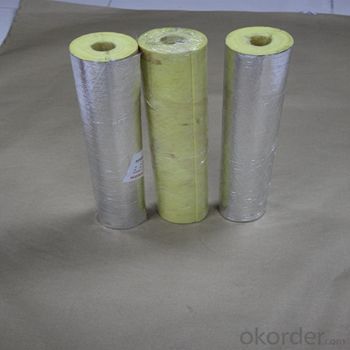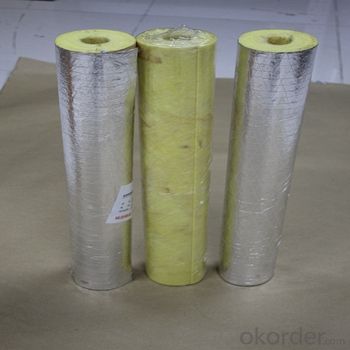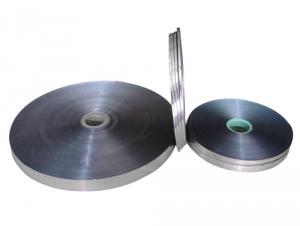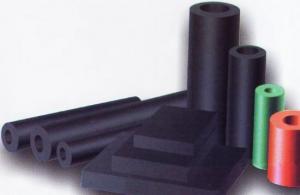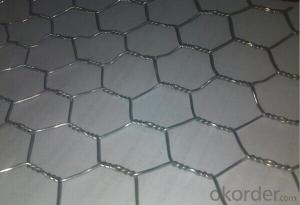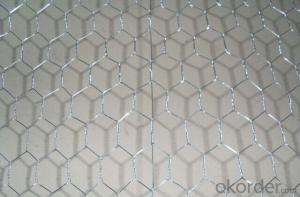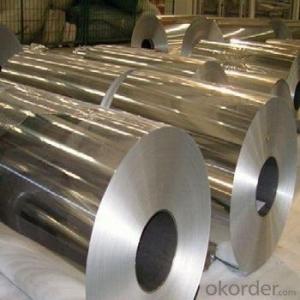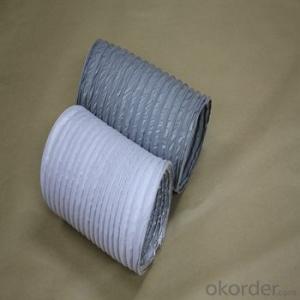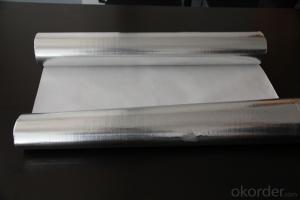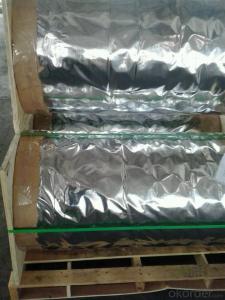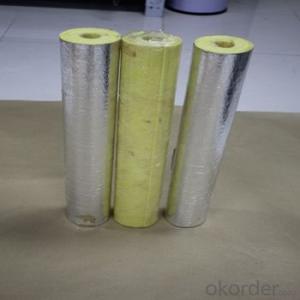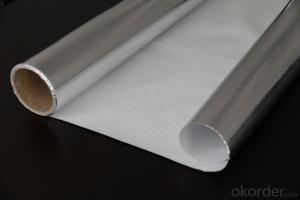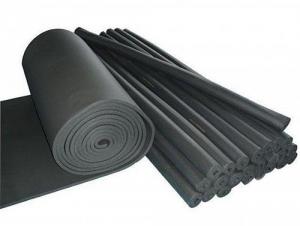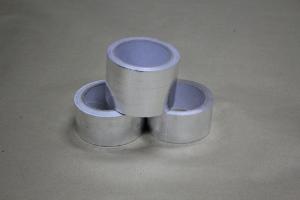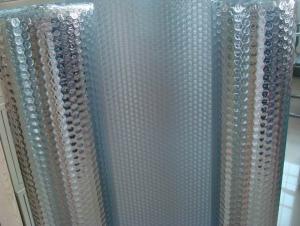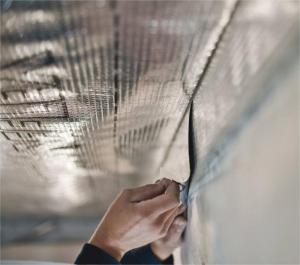Aluminum Foil Facing FSK Insulation for Roofing Wall Vapor Barrier
- Loading Port:
- Shanghai
- Payment Terms:
- TT OR LC
- Min Order Qty:
- 200 m²
- Supply Capability:
- 6000000 m²/month
OKorder Service Pledge
OKorder Financial Service
You Might Also Like
1. Aluminum Foil Facing Description:
The aluminum foil facing, whose structure is white polypropylene/ fiberglass scrim/ kraft is mainly used for metal building insulation and suitable for the insulation of ware-house, factory, supermarket, office and suitable for off-line lamination of glass wool or rock wool.
2.Main Features of the Aluminum foil facing:
• Light weight
• Small inertia resistance
• High manufacturing accuracy
• Strong heat dissipation ability
• Good visual effect
• environmentally friendly,no smell and not-toxic;
• Smooth and clear surface;
3.Aluminum Foil Facing Images
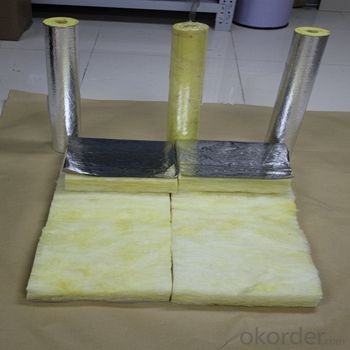
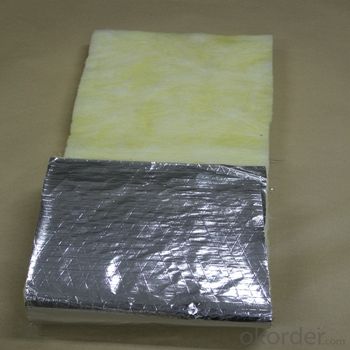
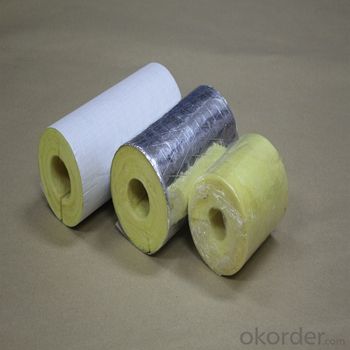
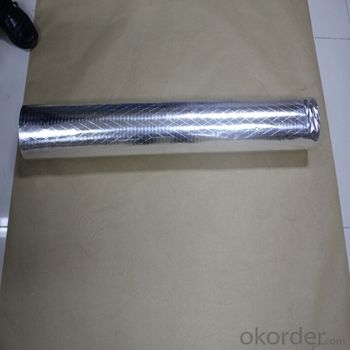
4.Aluminum Foil Facing Specification
Width: 1.0m, 1.2m, 1.25 m, 1.30, 1.37m
Length: 200m, 500m, 1000m, 2500m, 2750m, 3300m
Core I.D.: 3"(76mm ±1), 72mm ±1
Based on order, special sizes are also available.
5.FAQ
What is the storage condition?
The products should be stored at room temperature and kept from wet and heat source.
It is essential, as with all pressure-sensitive tapes, that the surface to which the tape is applied must be clean, dry, and free of grease and oil.
The user should take test and do trial-application on the above products before coming into application so as to witness and ensure suitability for user’s special purpose and technique.
- Q: This question asks about the potential health consequences of consuming food that has been wrapped in aluminum foil and then cooked or heated.
- <p>Eating food wrapped in aluminum foil facing is generally considered safe. Aluminum foil is designed to be food-safe and is approved by regulatory agencies like the FDA for cooking and food storage. However, there are some concerns about aluminum exposure. While the risk is minimal, it's important to note that prolonged, excessive exposure to aluminum could potentially contribute to health issues, although the link is not definitively proven. To be safe, it's recommended to avoid wrapping acidic foods like tomatoes or vinegar-based dishes in aluminum foil, as these can cause the foil to corrode and release aluminum. Additionally, using non-stick or parchment paper as an alternative can help minimize direct contact with aluminum.</p>
- Q: What are some suggestions to ensure plastic containers are used in a more hygienic and long-lasting manner?
- <p>To use plastic containers more hygienically and durably, follow these tips: 1) Always wash containers with warm soapy water and rinse thoroughly before and after each use. 2) Avoid putting hot foods or liquids directly into plastic containers to prevent warping and potential chemical leaching. 3) Do not use scratched or damaged containers as they can harbor bacteria and are more likely to break. 4) Store containers in a dry, cool place away from direct sunlight to prevent degradation. 5) Regularly inspect containers for signs of wear and replace them when necessary. 6) Use containers within their recommended temperature range to maintain their integrity and safety.</p>
- Q: This question asks for instructions on how to clean aluminum foil facing after it has been used in cooking or baking.
- <p>To clean aluminum foil facing after use, first let it cool down to avoid burns. Then, gently scrape off any food residue with a spatula or the edge of a knife. For stubborn stains, mix a solution of warm water and dish soap, and wipe the surface with a soft cloth or sponge. Rinse with clean water and dry thoroughly. For baked-on food, you can use a plastic scraper or an old toothbrush to gently remove it. Avoid using abrasive materials that could scratch the surface. Regular cleaning will help maintain the integrity and appearance of your aluminum foil facing.</p>
- Q: What are the advantages of using recycled aluminum foil for cooking and food storage?
- <p>Using recycled aluminum foil in cooking and food storage offers several benefits. It is environmentally friendly as it reduces waste and conserves resources. Recycled foil retains the same properties as non-recycled foil, providing excellent heat conduction and insulation, which is crucial for even cooking and maintaining food temperature. It is also cost-effective as it is generally cheaper than non-recycled foil. Moreover, it is versatile, suitable for a wide range of applications from baking to wrapping food for storage. However, it's important to ensure that the recycled foil is food-grade and meets safety standards to avoid any health risks.</p>
- Q: This question asks for the most effective method to smooth out wrinkles in aluminum foil facing material.
- <p>The best way to remove wrinkles from aluminum foil facing is to use a combination of heat and gentle stretching. First, preheat your iron on a low setting without steam. Place a thin cloth or parchment paper over the wrinkled aluminum foil facing to protect it from direct heat. Then, gently press the iron over the cloth, moving in a smooth, continuous motion. As the foil warms, it will become more pliable, allowing you to gently stretch and smooth out the wrinkles. Be cautious not to apply too much pressure or heat, as this can damage the foil.</p>
- Q: What are the types of food that should not be cooked with aluminum foil facing?
- <p>There are certain types of food that should not be cooked with aluminum foil facing. Acidic foods, such as tomatoes and citrus fruits, can react with the aluminum and potentially release harmful compounds. Foods high in salt or spices can also cause a reaction with the aluminum, leading to the leaching of aluminum into the food. Additionally, cooking acidic foods at high temperatures can increase the risk of aluminum contamination. It's best to avoid wrapping these types of foods in aluminum foil when cooking, or to use the dull side of the foil facing away from the food.</p>
- Q: Is it safe to use the same piece of aluminum foil repeatedly before disposal?
- <p>Reusing aluminum foil is generally not recommended due to hygiene and food safety concerns. Each time you use foil, it can pick up bacteria from food and surfaces, which can multiply with subsequent uses. Additionally, the foil can tear or become thin, potentially allowing harmful substances to leach into your food. For safety, it's best to use a fresh piece of aluminum foil for each use.</p>
- Q: This question asks for a comparison of the benefits and drawbacks associated with the use of aluminum foil facing in various applications.
- <p>Aluminum foil facing offers several advantages, including excellent heat reflection, which can improve insulation and energy efficiency in buildings. It also provides a moisture barrier, which can protect against water damage and mold growth. Additionally, aluminum foil facing is lightweight, easy to install, and resistant to corrosion. However, there are disadvantages such as its limited strength and durability compared to other materials, making it prone to punctures and tears. It can also be less aesthetically pleasing and may require additional protective layers for long-term use. Furthermore, improper disposal can contribute to environmental concerns due to its non-biodegradable nature.</p>
- Q: The user is asking if aluminum foil can be used to make a pizza crust more flaky and tender.
- <p>Using aluminum foil facing on a pizza crust won't inherently make it more flaky or tender. The flakiness and tenderness of a pizza crust are determined by the ingredients used and the method of preparation. For a flakier crust, consider using a higher fat content like butter or shortening, and for tenderness, ensure proper hydration and kneading of the dough. Aluminum foil is typically used for its heat distribution properties and to prevent direct contact with the oven rack, which can help in browning the bottom of the crust. However, it doesn't affect the flakiness or tenderness directly.</p>
- Q: Is it possible to use aluminum foil with a reflective side to construct a sandwich?
- <p>While it's technically possible to use aluminum foil facing to make a sandwich, it's not recommended. Aluminum foil is not designed for direct food contact, especially the reflective side which may contain harmful substances that could leach into the food. Instead, use the dull side of the foil or better yet, use food-safe wrap or containers for preparing and storing sandwiches.</p>
Send your message to us
Aluminum Foil Facing FSK Insulation for Roofing Wall Vapor Barrier
- Loading Port:
- Shanghai
- Payment Terms:
- TT OR LC
- Min Order Qty:
- 200 m²
- Supply Capability:
- 6000000 m²/month
OKorder Service Pledge
OKorder Financial Service
Similar products
Hot products
Hot Searches
Related keywords
